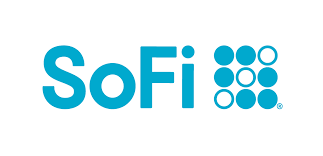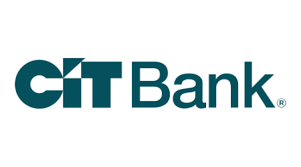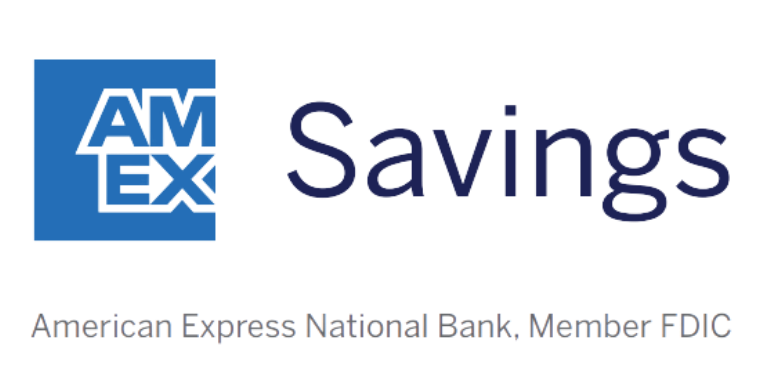High-yield savings accounts (HYSAs) are like the overachievers of the banking world -- they keep your money safe while working overtime to earn you extra cash. They pay much higher interest rates than most brick-and-mortar banks, they're FDIC insured, and they offer most of the same services.
There's no reason not to open a high-yield savings account, especially if you need somewhere to stash your emergency fund. But HYSAs do have some limitations you should know about.
Here are the pros and cons of high-yield savings accounts, so you know exactly what you’re signing up for.
Compare savings rates
Make sure you're getting the best account for you by comparing savings rates and promotions. Here are some of our favorite high-yield savings accounts to consider.
| Account | APY | Promotion | Next Steps |
|---|---|---|---|

Open Account for SoFi Checking and Savings
On SoFi's Secure Website.
Rating image, 4.50 out of 5 stars.
4.50/5
Our ratings are based on a 5 star scale.
5 stars equals Best.
4 stars equals Excellent.
3 stars equals Good.
2 stars equals Fair.
1 star equals Poor.
We want your money to work harder for you. Which is why our ratings are biased toward offers that deliver versatility while cutting out-of-pocket costs.
|
up to 3.80%²
Rate info
You can earn the maximum APY by having Direct Deposit (no minimum amount required) or by making $5,000 or more in Qualifying Deposits every 30 days. See SoFi Checking and Savings rate sheet at: https://www.sofi.com/legal/banking-rate-sheet.
Min. to earn: $0
|
New customers can earn up to a $300 bonus with qualifying direct deposits!¹
|
Open Account for SoFi Checking and Savings
On SoFi's Secure Website. |

Open Account for CIT Platinum Savings
On CIT's Secure Website.
Rating image, 4.50 out of 5 stars.
4.50/5
Our ratings are based on a 5 star scale.
5 stars equals Best.
4 stars equals Excellent.
3 stars equals Good.
2 stars equals Fair.
1 star equals Poor.
We want your money to work harder for you. Which is why our ratings are biased toward offers that deliver versatility while cutting out-of-pocket costs.
|
4.10% APY for balances of $5,000 or more
Rate info
4.10% APY for balances of $5,000 or more; otherwise, 0.25% APY
Min. to earn: $100 to open account, $5,000+ for max APY
|
Earn a bonus of at least $225 after a one-time deposit of $25,000+.
Transfer a one-time deposit of $25,000-$49,999.99 for a bonus of $225. Transfer a one-time deposit of $50,000+ for a bonus of $300. Account must be opened with code PS2025 while this promotion lasts, and funded within 30 days. Bonus will be fulfilled within 60 days from the funding date. There is no period of time where the customer will be required to maintain the funds. Account must be open when bonus is credited. One bonus per account and primary customer. Bonus will be credited into the Platinum Savings Account that fulfills the funding requirement. Funding can be deposited all at once or incrementally.
|
Open Account for CIT Platinum Savings
On CIT's Secure Website. |

Open Account for American Express® High Yield Savings
On American Express's Secure Website.
Rating image, 4.00 out of 5 stars.
4.00/5
Our ratings are based on a 5 star scale.
5 stars equals Best.
4 stars equals Excellent.
3 stars equals Good.
2 stars equals Fair.
1 star equals Poor.
We want your money to work harder for you. Which is why our ratings are biased toward offers that deliver versatility while cutting out-of-pocket costs.
|
3.70%
Rate info
3.70% annual percentage yield as of April 9, 2025. Terms apply.
Min. to earn: $0
|
N/A
|
Open Account for American Express® High Yield Savings
On American Express's Secure Website. |
SoFi disclosure:
¹ New and existing Checking and Savings members who have not previously enrolled in Direct Deposit with SoFi are eligible to earn a cash bonus of either $50 (with at least $1,000 total Direct Deposits received during the Direct Deposit Bonus Period) OR $300 (with at least $5,000 total Direct Deposits received during the Direct Deposit Bonus Period). Cash bonus will be based on the total amount of Direct Deposit. Direct Deposit Promotion begins on 12/7/2023 and will be available through 1/31/26. See full bonus and annual percentage yield (APY) terms at sofi.com/banking#1.
² SoFi members who enroll in SoFi Plus with Direct Deposit or by paying the SoFi Plus Subscription Fee every 30 days or with $5,000 or more in Qualifying Deposits during the 30-Day Evaluation Period can earn 3.80% annual percentage yield (APY) on savings balances (including Vaults) and 0.50% APY on checking balances. There is no minimum Direct Deposit amount required to qualify for the stated interest rate. Members without either SoFi Plus or Qualifying Deposits, during the 30-Day Evaluation Period will earn 1.00% APY on savings balances (including Vaults) and 0.50% APY on checking balances. Only SoFi Plus members are eligible for other SoFi Plus benefits. Interest rates are variable and subject to change at any time. These rates are current as of 1/24/25. There is no minimum balance requirement. Additional information can be found at http://www.sofi.com/legal/banking-rate-sheet. See the SoFi Plus Terms and Conditions at https://www.sofi.com/terms-of-use/#plus.
³ We do not charge any account, service or maintenance fees for SoFi Checking and Savings. We do charge a transaction fee to process each outgoing wire transfer. SoFi does not charge a fee for incoming wire transfers, however the sending bank may charge a fee. Our fee policy is subject to change at any time. See the SoFi Checking & Savings Fee Sheet for details at sofi.com/legal/banking-fees/.
⁴ SoFi Bank is a member FDIC and does not provide more than $250,000 of FDIC insurance per depositor per legal category of account ownership, as described in the FDIC’s regulations.
Any additional FDIC insurance is provided by the SoFi Insured Deposit Program. Deposits may be insured up to $3M through participation in the program. See full terms at SoFi.com/banking/fdic/sidpterms. See list of participating banks at SoFi.com/banking/fdic/participatingbanks.
⁵ We’ve partnered with Allpoint to provide you with ATM access at any of the 55,000+ ATMs within the Allpoint network. You will not be charged a fee when using an in-network ATM, however, third-party fees incurred when using out-of-network ATMs are not subject to reimbursement. SoFi’s ATM policies are subject to change at our discretion at any time.
⁶ Early access to direct deposit funds is based on the timing in which we receive notice of impending payment from the Federal Reserve, which is typically up to two days before the scheduled payment date, but may vary.
⁷ Overdraft Coverage is limited to $50 on debit card purchases only and is an account benefit available to customers with direct deposits of $1,000 or more during the current 30-day Evaluation Period as determined by SoFi Bank, N.A. The 30-Day Evaluation Period refers to the “Start Date” and “End Date” set forth on the APY Details page of your account, which comprises a period of 30 calendar days (the“30-Day Evaluation Period”). You can access the APY Details page at any time by logging into your SoFi account on the SoFi mobile app or SoFi website and selecting either (i) Banking > Savings > Current APY or (ii) Banking > Checking > Current APY. Members with a prior history of non-repayment of negative balances are ineligible for Overdraft Coverage.
Advantages of high-yield savings accounts
If you're looking for a smarter way to stash your cash, HYSAs might just be your new financial favorite. Here's why they shine:
High interest rate
The average bank account in the U.S. has an annual percentage yield (APY) of 0.42%. Translation? A $1,000 balance would earn $4.20 over the course of a year.
Meanwhile, the best high-yield savings accounts have APYs of about 3.75% to 4.00% or more. At 4.00% APY, a $1,000 balance would earn $40 in a year -- nearly 10 times the national average.
That kind of growth can’t be ignored and is reason enough to jump on the HYSA bandwagon.
Low or no fees
Hate fees? Same here. The best high-yield savings accounts do not charge monthly maintenance fees or overdraft fees. They also have no minimum balance requirements, so you can start saving with as little as $1.
FDIC insurance
The Federal Deposit Insurance Corporation (FDIC) insures bank account balances of depositors for up to $250,000 per bank, per account ownership category. If an FDIC-insured bank goes bankrupt, then balances up to that amount are guaranteed to be returned to customers. For joint accounts with two owners, up to $500,000 would be covered.
All the top high-yield savings accounts are FDIC insured, so no matter what happens, your savings are safe and sound.
No risk of losing money
You can lose money in the stock market or other investments, but money stored in a high-yield savings account will always grow over time. APYs are variable and yours will fluctuate, but it will never be negative. Your money only moves in one direction: up.
Easy access to your money
For the most part, savings accounts let you withdraw money whenever you want. Meanwhile, most certificates of deposit (CDs) charge a penalty if you withdraw money before the CD maturity date, which could be as many as several years in the future, depending on your CD term.
Most banks that offer high-yield savings accounts will send you an ATM card if you also open a checking account with them. And some banks will provide an ATM card for use with just a savings account, making access to your cash even more convenient and allowing you to keep your checking account elsewhere.
Many people are missing out on guaranteed returns as their money languishes in a big bank savings account earning next to no interest. Motley Fool Money's top savings account picks can earn you more than 10x the national average savings account rate.
Disadvantages of high-yield savings accounts
Despite the positives, there are a few things to consider before opening your high-yield savings account.
APYs change over time
All banks raise or lower their savings accounts' APYs from time to time. This usually happens because the Federal Reserve has raised or lowered the federal funds rate, though there may be other reasons.
This means the fantastic interest rate that grabbed your attention isn’t locked in forever.
Minimum balance requirements
Some banks require you to deposit a certain amount of money to open an account. They may also require you to maintain a minimum balance -- often $1,000 or more -- to avoid monthly maintenance fees or to earn the highest APY.
Make sure you read the fine print before opening a high-yield savings account. If a bank advertises a high APY, but you need to deposit more than you can afford to keep in the account to get that rate, then you should look elsewhere.
Many of the best high-yield savings accounts do not have minimum balance requirements.
Withdrawing money takes some time and effort
Getting money out of a savings account is relatively easy -- but it's not instantaneous.
Most savings accounts don't come with debit cards, so you can't spend money directly from the account. If you open a checking account with the same bank, you can instantly transfer money from savings to checking and then spend it with a debit card or withdraw it from an ATM.
Transferring money to an account at a different bank usually takes a few days to process before the funds are available. This can be an inconvenience if you need the money now.
Withdrawals are limited
While not as common since the suspension of Regulation D in 2020, some banks may still place limitations on the number of withdrawals you can make per month without penalty. Some high-yield savings accounts only allow you to make six withdrawals per month, though the best accounts usually don't have this limit.
All banks limit the amount of money you can withdraw at once. For example, you may be limited to $1,000 per ATM withdrawal, $5,000 per debit card transaction, and $20,000 per in-person withdrawal.
No local bank branches
Most of the best high-yield savings accounts come from online-only banks. That means you can't walk into a physical bank location to speak with an agent in person or to deposit or withdraw cash.
There are exceptions, though. Some banks that offer high-yield savings accounts have brick-and-mortar locations, like the Capital One 360 Performance Savings. The Western Alliance Bank High-Yield Savings Premier also has branch locations available across several states. Be sure to check your area for branches before you sign up. Others allow you to deposit or withdraw cash at certain retailers.
Keep in mind that a lack of physical branches is what allows some banks to offer high-yield savings accounts in the first place. By operating online only, they save a lot of money -- and they pass those savings on to customers through more competitive interest rates.
Lower returns than some investments
High-yield savings accounts are perfect for emergency savings or other funds that you may need to withdraw on short notice. However, they're not the best option for growing your wealth.
Even a high-yield savings account may not always keep up with inflation. If your savings account pays a 4.00% APY, but prices rise by 4.75% per year, then your savings will lose value.
For long-term financial goals like saving for retirement, you're probably better off investing in the stock market through a 401(k) and/or an IRA. There's greater risk of losing money, at least temporarily. However, a diversified stock portfolio can achieve much higher returns. Over the past 100 years, the S&P 500 index -- which includes the biggest publicly traded companies in the U.S. -- has returned an average of 10% per year.
Is a high-yield savings account worth it?
Absolutely, opening a high-yield savings account is worth it, so long as the bank is FDIC insured and charges low or no fees. Your savings will grow, and there's no risk of losing any amount up to $250,000.
There's just one caveat: Ideally, you won't put all of your money in a high-yield savings account.
Savings accounts are an excellent place for emergency funds and any money you might spend within the next five years or so. But when it comes to the money you're saving for retirement, or for buying a home in 10 years, consider investing in high-growth assets like stocks and bonds. You can get a much higher return on your investment, and you'll have enough time to ride out the ups and downs of the market to minimize risk.
Ready to get started? Check out our list of the best high-yield savings accounts. And if you're looking for a good place to invest your long-term savings, check out our list of the best online stock brokers.
FAQs
-
High-yield savings accounts are safe as long as they're FDIC insured and your balance falls within FDIC insurance limits. Luckily, all the top high-yield savings accounts are FDIC insured, meaning the FDIC will reimburse you up to $250,000 if your bank goes out of business.
-
High-yield savings accounts are best used for housing your emergency fund or other short-term savings. Long-term savings is best invested for maximum growth.
We're firm believers in the Golden Rule, which is why editorial opinions are ours alone and have not been previously reviewed, approved, or endorsed by included advertisers. Motley Fool Money does not cover all offers on the market. Motley Fool Money is 100% owned and operated by The Motley Fool. Our knowledgeable team of personal finance editors and analysts are employed by The Motley Fool and held to the same set of publishing standards and editorial integrity while maintaining professional separation from the analysts and editors on other Motley Fool brands. Terms may apply to offers listed on this page. APYs are subject to change at any time without notice.